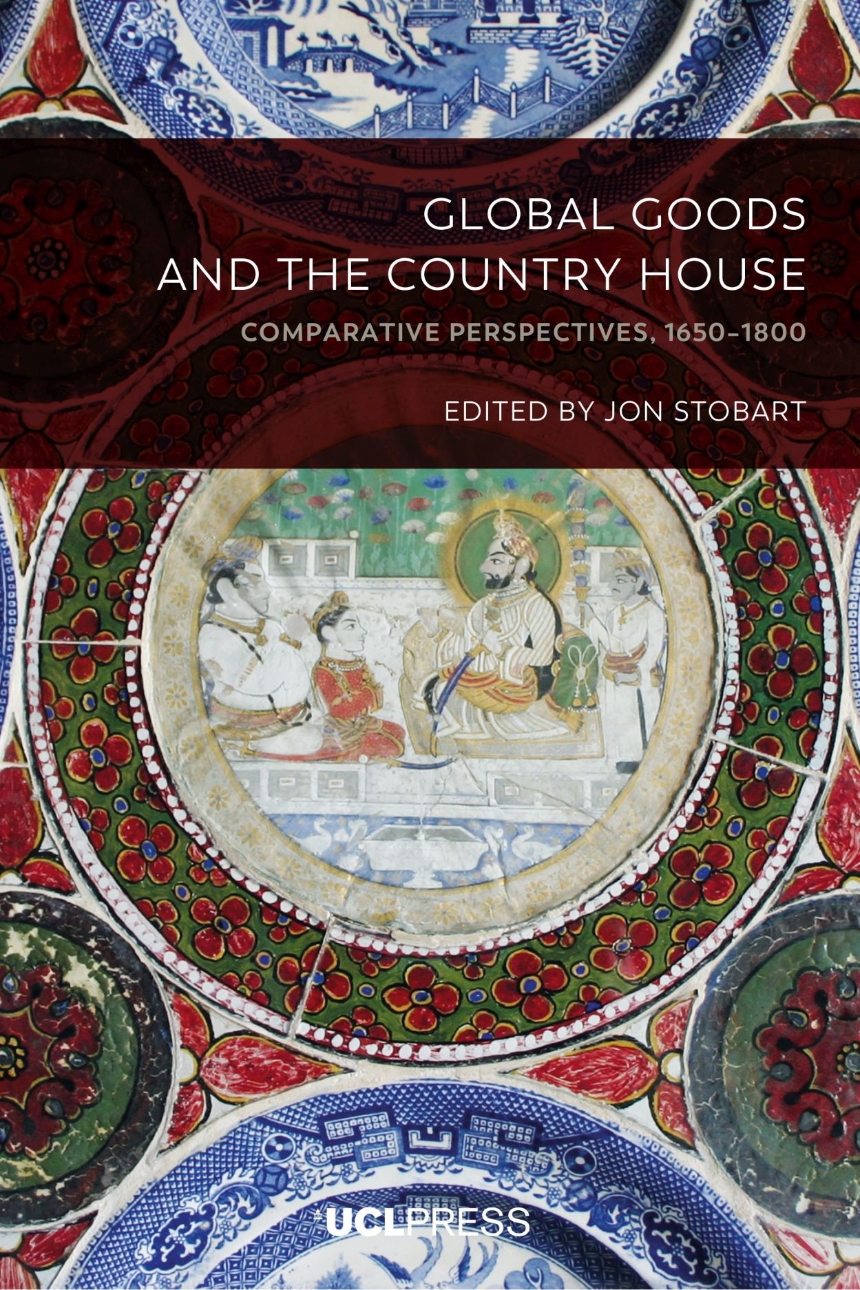9781800083844
9781800083851
Fresh insights into the multi-directional flow of goods and cultures that enmeshed the eighteenth century.
Global goods were central to the material culture of eighteenth-century country houses. Across Europe, mahogany furniture, Chinese wallpapers, and Indian textiles formed the backdrop to genteel practices of drinking sweetened coffee, tea, and chocolate from Chinese porcelain. They tied these houses and their wealthy owners into global systems of supply and the processes of colonialism and empire.
Global Goods and the Country House builds on these narratives and then challenges them by decentering our perspective. It offers a comparative framework that explores the definition, ownership, and meaning of global goods outside the usual context of European imperial powers. What were global goods and what did they do for and mean to wealthy landowners in places at the “periphery” of Europe (Sweden and Wallachia), in the British colonies of North America and the Caribbean, or in the extra-colonial context (Japan or Rajasthan)? By placing these goods in their specific material context—from the English country house to the princely palaces of Rajasthan—we gain a better understanding of their use and meaning and of their role in linking the global and the local.
Global goods were central to the material culture of eighteenth-century country houses. Across Europe, mahogany furniture, Chinese wallpapers, and Indian textiles formed the backdrop to genteel practices of drinking sweetened coffee, tea, and chocolate from Chinese porcelain. They tied these houses and their wealthy owners into global systems of supply and the processes of colonialism and empire.
Global Goods and the Country House builds on these narratives and then challenges them by decentering our perspective. It offers a comparative framework that explores the definition, ownership, and meaning of global goods outside the usual context of European imperial powers. What were global goods and what did they do for and mean to wealthy landowners in places at the “periphery” of Europe (Sweden and Wallachia), in the British colonies of North America and the Caribbean, or in the extra-colonial context (Japan or Rajasthan)? By placing these goods in their specific material context—from the English country house to the princely palaces of Rajasthan—we gain a better understanding of their use and meaning and of their role in linking the global and the local.
478 pages | 84 halftones, 2 line drawings, 14 tables | 6.14 x 9.21 | © 2023
History: British and Irish History, European History
Table of Contents
List of figures List of tables List of contributors Introduction: contexts and departures Jon Stobart Part 1: Consuming global goods 1 Mahogany, sugar and porcelain: global goods for a Swedish aristocratic family in the eighteenth century Gudrun Andersson and Göran Ulväng 2 Global goods and Imperial Knights: assemblages in country houses in southwestern Germany, 1700–1820 Daniel Menning, Anne Sophie Overkamp and Julietta Schulze 3 The global Samurai: imports and daily life in isolated Japan Martha Chaiklin 4 ’We are starving for want of Tea’: Asian objects, domestic slavery, and Caribbean sociability Christine Walker Object lessons 1: Traded goods I Statuette of captain Jacob Beckmann Mikkel Venborg Pedersen II Osnaburg: a study in global textile production and exploitation Laura Johnson III Suite of ebony furniture inlaid with ivory, Charlecote Park Annabelle Gilmore and Jon Stobart IV Newspaper advertisement for The English Depot. E. Grant & Comp., Bucharest Nicoleta Roman V Histoire des deux Indes by Guillaume Raynal, 1780 Eleanor Matthews Part 2: The global in the local 5 Power, friendship and delightfulness. Global goods in the residencies of an aristocratic family in the Kingdom of Naples Gaia Bruno 6 Luxury, international trade and consumption in three eighteenth-century Danish homes Mikkel Venborg Pedersen 7 Interiors as a visiting card: decoration, consumption and material culture in a mid-nineteenth century Romanian country house Nicoleta Roman 8 An ‘American Bearskin Merchant’ in the ‘Wilds of Pennsylvania’: trade and the British country house in North America Stephen G. Hague Object lessons 2: Crafting global goods VI Model of a Chinese Pagoda by Elizabeth Ratcliffe, 1767 Emile de Bruijn VII The Barbados Monkey Jar Kevin Farmer and Tara Inniss VIII Japanese red wool Jinbaori (Surcoat) – East Meets West Martha Chaiklin IX Shellwork shadowbox grottoes as global goods Laura C. Keim X Tobacco rolls, Württemberg Daniel Menning Part 3: Domesticating the global 9 Second-hand empire? Global goods in English provincial auctions, c.1760-1840 Jon Stobart 10 Global houses of the Efik Louis P. Nelson 11 Negotiating cosmopolitan taste with local culture: Porcelain rooms in Indian (Rajput) forts and palaces Esther Schmidt Object lessons 3: Symbols and symbolism XI The new worlds’ gate Gaia Bruno XII Two clubs, two perspectives: Haudenosaunee material culture at Audley End Michael Galban (Wašiw & Kutzadika’a) and Peter Moore XIII Design for pinery built for Sir Joseph Banks, 1807 Kate Donington XIV Grosser Atlas über Die Gantze Welt, by Johann Baptist Homann (1663-1724) Mrinalini Venkateswaran XV Frans Post’s View of Itamaracá Island. Rethinking a colonial past Yme Kuiper Part 4: Imperial houses 12 Cartography, collecting and the construction of empire at Dyrham Park Rupert Goulding and Louis P. Nelson 13 A growing empire of goods: botanical collecting, gardening, and the mercantile suburban villa Katie Donington 14 Colonial power and global gifts: the governorship of Johan Maurits, Count of Nassau-Siegen in Dutch Brazil (1637-1644) Yme Kuiper Conclusions Jon Stobart Index

